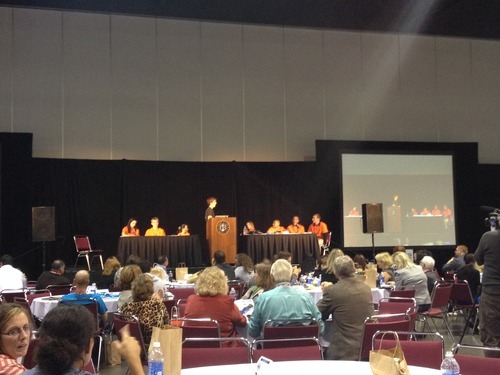For the last two weekends, the Tuva team has been on the road meeting and greeting with inspiring math and statistics teachers across Rhode Island and New Jersey.
On Oct 5th, we were one of the 20 odd companies that participated in the EdSurge Tech for Schools Summit at the Rhode Island DoE’s annual technology conference in Providence. This Summit was the second such event that the team over at EdSurge has put together this year (first was in Chicago). The goal of the summit was simple – create a forum where ed tech companies can meaningfully engage in a dialogue with educators, learn more about their classroom environments, and allow educators to test their products. The first half of the event didn’t go as planned, and there were plenty of lessons learned for everyone involved in organizing this event.
A week later, on Oct 12th, Tuva was also in the attendance at the statewide ed tech conference at John Adams Middle School in Edison, NJ. Over three hundred educators came together in Central NJ to attend a variety of sessions on how to integrate free technology tools into their instruction.
Over the course of these two events, we had the opportunity to interact with many educators, get their feedback on Tuva, and how they are looking for ways to make math learning more relevant, engaging, and personalized for their students. It was a great learning experience for us, and I’d like to share some of these learnings:
1. In many cases, two teachers in the same district teaching the same grades and subjects don’t get an opportunity to interact with one another, share resources, and exchange ideas.
2. Each district has its own policy and suggested best practices regarding teacher’s use of social media to interact with students inside and outside the classroom.
3. Using social media tools to interact with students can sometimes bring about tricky moral dilemmas for teachers when dealing with their students. These dilemmas can be daunting enough to keep teachers away from using social media with their students.
4. Access to devices and creating 1:1 learning environments is still out of reach of many middle school and high school teachers in these two states. It will be interesting to see how quickly this landscape changes over the next couple of years.
5. Successfully integrating technology into the classroom environment takes time, lots of patience, sharing of best practices, and a willingness to step outside traditional classroom norms.

A panel of kids talking about what technology in the classroom means to them during lunch hour in Providence, RI